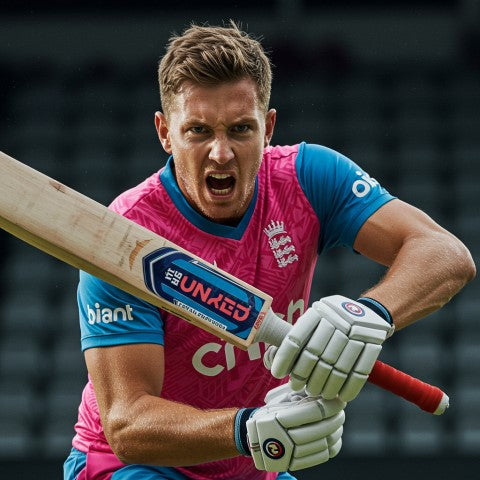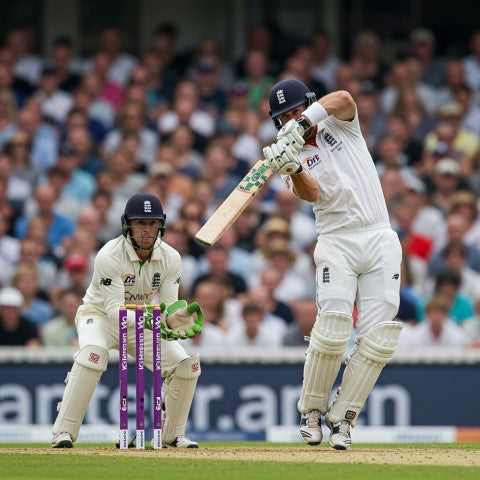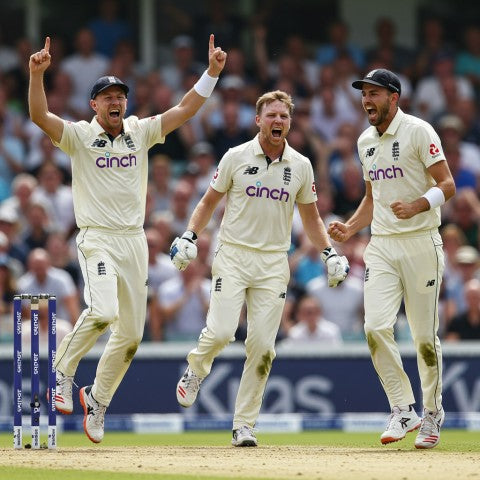What Is Major League Cricket? The Rise of T20 in America

1. Introducing Major League Cricket: America’s T20 Experiment
Major League Cricket (MLC) was officially launched in 2023 with a clear mission: to establish the United States as a serious player in global T20 cricket. Its format follows the successful IPL-style franchise model, featuring city-based teams, international stars, and a high-octane schedule designed for modern viewers. But what sets MLC apart from past attempts is timing — and infrastructure.
The rise of streaming platforms, the explosion of the T20 format globally, and the increasing visibility of cricket in North America have created a fertile moment. The league’s inaugural season featured six teams representing key metro areas: Los Angeles, San Francisco, Seattle, Dallas, Washington D.C., and New York. Each was backed by a combination of American tech capital and global cricketing clout.
Unlike previous ventures, MLC isn't a half-hearted experiment. It has invested heavily in building new venues, including the purpose-built Grand Prairie Stadium in Texas. Matches are streamed globally and marketed aggressively to a young, mobile-first audience.
This isn’t about transplanting the IPL — it’s about creating a uniquely American T20 product with global credibility. In short, Major League Cricket is an audacious blend of Silicon Valley ambition, sports marketing savvy, and cricketing tradition. And if it succeeds, it could unlock one of the sport’s final frontiers.
2. Who’s Behind the League? Investors, Owners and ICC Involvement
Behind the scenes of Major League Cricket lies a formidable coalition of stakeholders. At its core is American Cricket Enterprises (ACE), a consortium that secured exclusive rights from USA Cricket to develop a domestic T20 league. ACE itself is backed by influential investors, including Satya Nadella (Microsoft CEO), Adobe’s Shantanu Narayen, and other South Asian-American tech leaders.
This isn’t hobbyist ownership — it’s strategic capital. These investors bring experience scaling global platforms, and they see MLC not just as a sporting venture but as a media and branding opportunity.
The International Cricket Council (ICC) has lent its support, recognising the commercial potential of a thriving US market. The ICC has earmarked the United States as a co-host for the 2024 T20 World Cup alongside the West Indies — a key step in growing the game’s visibility. MLC is thus both a domestic product and part of a broader global plan.
Team ownership has followed the franchise model seen in the IPL and The Hundred. High-profile cricket boards, management companies, and private entrepreneurs have come on board, bringing expertise in scouting, coaching, and player development.
The result? A league designed not just for survival, but for scale. Major League Cricket is positioned at the intersection of global sport and American entertainment — and its backers are betting that’s a recipe for success.
3. Star Power: International Cricketers in Major League Cricket
To gain traction, any new sports league needs recognisable names — and Major League Cricket has made sure to deliver. Its debut season attracted an impressive array of international talent, from T20 legends to emerging stars.
Players like Andre Russell, Sunil Narine, Aaron Finch, Quinton de Kock, and Marcus Stoinis brought global flair and built-in fanbases. Meanwhile, fringe players from India, Pakistan, and the Caribbean saw MLC as a new stage — one with fewer politics, better pay, and high exposure.
Crucially, these signings give the league immediate legitimacy. American-born players are still in development, so international imports provide the quality and consistency fans expect. Their presence also helps bridge cultural gaps — fans in New Jersey might come to cheer for a team because their favourite West Indian all-rounder is playing for it.
Franchise owners have also tapped into the IPL network, with multiple coaching staff, physios and analysts crossing over. This raises the standard of the competition, ensuring that Major League Cricket is not treated as a retirement home but as a genuine challenge.
If MLC continues to attract this calibre of player — and nurture local talent alongside them — it could soon be more than just a novelty. It could be a proving ground, a stepping stone, and a statement that cricket in America means business.
4. The Format: Rules, Structure and Franchise System
Major League Cricket follows the familiar T20 playbook — 20 overs per side, white-ball action under lights, and a packed calendar designed to keep fans hooked. But the way it’s structured borrows smartly from both American sports leagues and global cricket franchises.
The league currently features six franchises: Los Angeles Knight Riders, San Francisco Unicorns, MI New York, Texas Super Kings, Seattle Orcas, and Washington Freedom. Each team is owned or affiliated with major IPL stakeholders, giving the league instant credibility and cross-market pull.
Matches are staged across a tight window, typically during the US summer, and spaced to maximise media coverage and fan engagement. The tournament uses a round-robin format followed by playoffs — mirroring the IPL model while keeping the total number of fixtures digestible for American audiences still new to cricket.
Each squad includes a mix of international players, US-based talent, and emerging cricketers from USA Cricket’s development pipeline. This structure ensures local players get exposure while international stars draw eyeballs.
The rules are standard T20 fare, though there are discussions about adding innovations like timeouts, fielding substitutions, or bonus points to keep it fresh.
In essence, Major League Cricket offers a T20 product tailored for American consumption — pacey, polished, and franchise-focused. The hope is that with the right mix of quality and spectacle, it will find an audience far beyond just the expat crowd.
5. Building the Infrastructure: Stadiums, Cities and Broadcasting
For Major League Cricket to be more than just a summer sideshow, it needs physical roots — proper stadiums, local fan bases, and high-quality broadcast deals. And in this regard, MLC has taken significant strides.
The league's flagship venue is Grand Prairie Stadium in Texas — a former baseball ground transformed into a cricket-specific facility with a 7,000+ seating capacity. It symbolises the league’s ambitions: world-class pitch preparation, fan-friendly amenities, and a design suited for both TV and live audiences.
Other matches are staged in adapted stadiums across California, North Carolina, and Florida. Meanwhile, long-term plans are underway to build purpose-built grounds in key metro areas — especially where cricket-friendly diaspora communities thrive.
Broadcasting is equally crucial. MLC struck a deal with Willow TV and Viacom18 to stream games in both the US and international markets. With short, digestible match times, the product is ideal for on-demand viewers — a fact not lost on sponsors and digital platforms eager to tap into the global cricket audience.
Importantly, MLC is investing not just in venues but also in training centres, academies, and youth engagement. This isn’t just about spectacle — it’s about sustainability. If Major League Cricket wants to survive beyond a few flashy summers, it must grow its roots deep into American soil.
6. Competing with Baseball: Can Cricket Find a Niche in the US?
Baseball is America’s bat-and-ball king — a sport deeply woven into the nation’s identity. So can Major League Cricket realistically coexist in a landscape already saturated with MLB, NBA, NFL and college sports?
Perhaps surprisingly, yes — but not by competing directly. MLC’s strategy is to position itself as a complement, not a competitor. It runs during baseball’s midseason lull, and its fast-paced format appeals to younger audiences with short attention spans. Where baseball is steeped in tradition and slow-play rituals, T20 is explosive, expressive, and bite-sized — perfect for digital-first consumption.
Moreover, cricket’s demographic advantage in the US is clear. The South Asian, Caribbean, and UK expat populations — many based in cities like New York, Dallas and San Francisco — represent a loyal, cricket-literate fan base. If even a fraction of them turn out, MLC can draw respectable crowds.
Marketing efforts have wisely focused on framing cricket as “baseball’s cousin with more flair”. Broadcasts highlight similarities (pitching vs bowling, innings structure), while drawing attention to cricket’s global appeal and IPL-style glitz.
The key for Major League Cricket isn’t replacing baseball — it’s offering something new: a global sport with local teams, a new culture of fandom, and a chance for America to finally “get” cricket, on its own terms.
7. Fan Engagement: The Role of Diaspora and Digital Platforms
Without fans, no league survives — and Major League Cricket understands this well. Its success will depend on building a passionate, loyal fan base beyond the novelty stage. To do this, it’s leaned into its most obvious strength: the diaspora.
South Asian, Caribbean, Australian and British communities across the US already understand and love cricket. MLC's early marketing efforts have focused on these groups — not just as spectators, but as stakeholders. Community events, meet-and-greets with players, local club integration, and youth cricket camps have helped create genuine grassroots buzz.
Social media has also been a key weapon. MLC’s slick digital presence — complete with highlight reels, team banter, behind-the-scenes content and fantasy leagues — is tailored to a generation that consumes sport on mobile rather than TV.
Influencers from cricket-loving cultures have been enlisted to promote the league, while streaming deals ensure international fans stay engaged. Merchandise, city-specific branding and supporter clubs add to the sense of legitimacy.
The goal is clear: make fans feel this is their league, not an import. If MLC can convert even a fraction of US-based cricket fans into season-ticket holders, content sharers and youth team coaches, it won’t just build a league — it’ll build a movement.
8. Will Major League Cricket Succeed Where Others Failed?
America has tried cricket before. From the doomed Pro Cricket league in 2004 to underfunded national team efforts, the sport’s US journey has been riddled with false starts. So why should Major League Cricket be any different?
In a word: timing.
MLC arrives at a moment when T20 is a global juggernaut, the US has matured as a multicultural sports market, and digital platforms have lowered the barrier to entry for new leagues. Unlike its predecessors, MLC has money, infrastructure, star power, and institutional backing — a rare combination.
The league also benefits from stronger governance. USA Cricket, after years of infighting, has stabilised. Partnerships with the ICC and IPL franchises lend MLC credibility and operational know-how.
Perhaps most importantly, MLC isn’t trying to convert America overnight. It’s focused on diaspora communities, sustainable growth, and building from the ground up. It’s not chasing instant mainstream validation — it’s building its own ecosystem, brick by brick.
Of course, challenges remain: gaining attention in a crowded sports calendar, expanding venues, growing local talent, and maintaining financial discipline. But unlike its predecessors, Major League Cricket feels less like a novelty — and more like a long-term play.
Conclusion: Why Major League Cricket Might Actually Work
For decades, cricket in America was little more than a curiosity — a game for expats, a side note in sports history. But with the launch of Major League Cricket, that narrative is changing.
This isn’t a gimmick or a quick cash grab. It’s a serious, well-funded effort to make T20 cricket part of the American sporting conversation. From international stars and IPL connections to grassroots investments and digital-first marketing, MLC has built its foundation thoughtfully — and with long-term vision.
Of course, challenges remain. Winning over mainstream sports fans, competing for eyeballs, and developing homegrown players will take time. But time is exactly what MLC seems to understand — and for once, cricket in America isn’t in a rush. It’s here to stay.
In a nation obsessed with pace, drama and entertainment, T20 cricket feels surprisingly at home. And if Major League Cricket continues on its current trajectory, it may just achieve the unthinkable: turning cricket from a niche pastime into America’s next great summer sport.





Leave a comment